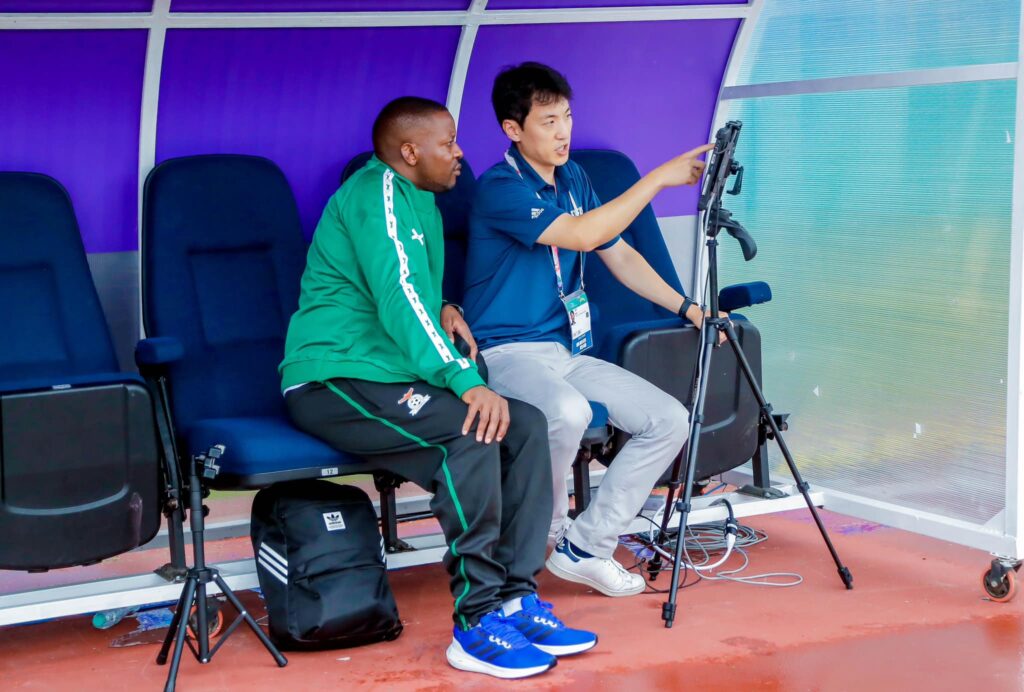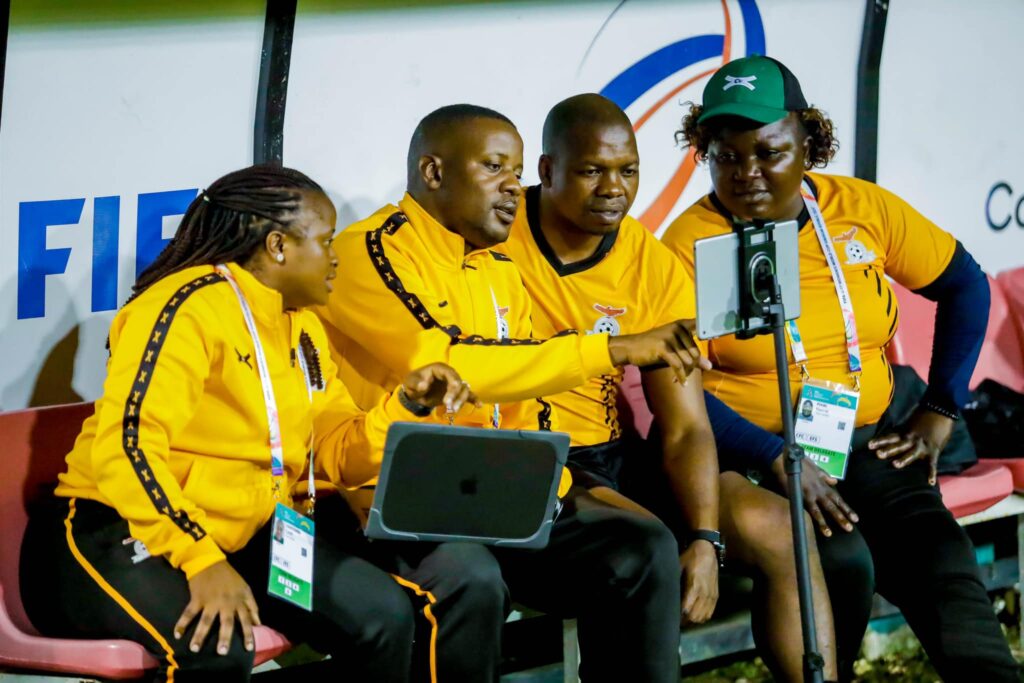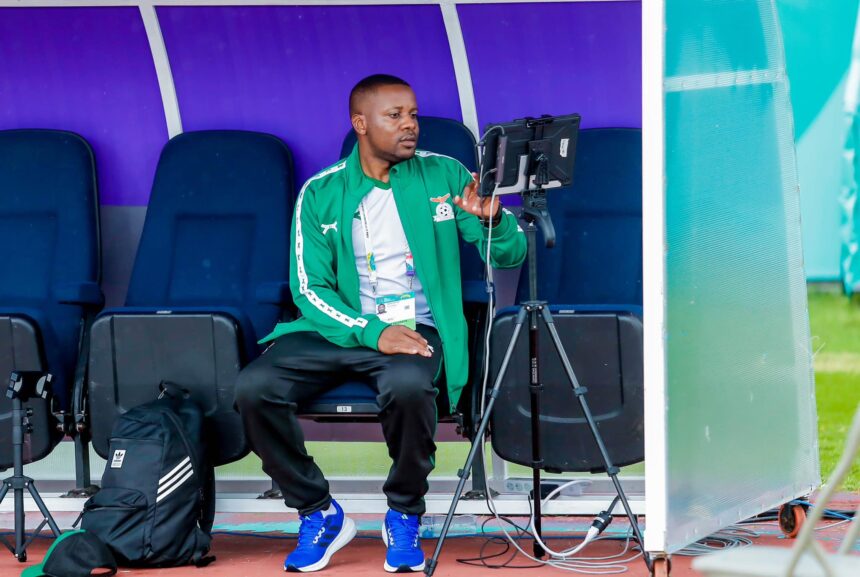In the world of football, some stories aren’t just about goals scored or titles won; they’re about passion, growth, and the drive to elevate one’s country on the global stage. For former Zambian striker Lineker Mwiikisa, his journey from playing in clubs across Africa and beyond to becoming the first Zambian video analyst at a FIFA World Cup is one of these stories.
Mwiikisa, who once played for teams like Santa Clara, Black Aces, Costa Do Sol, Ferroviario de Beira, Green Eagles, and Green Buffaloes, transitioned from the pitch to the technical area, where he now specializes in video analysis—a skill that many may not associate with his previous role as a forward. However, this leap was not an accident. For the 38-year-old, it was a conscious decision to give back to his country.

“It means a lot. For me, it was more of giving back to my country,” Mwiikisa reflected on his achievement. “I didn’t even look at it like I was the best. I was just trying to do my job and represent my country. I learned most of my analysis from my playing days. Having played in South Africa, Portugal, Mozambique, and the Middle East, I gained experience from my coaches, and that experience has been invaluable in my transition into coaching and analysis.”
In fact, Mwiikisa’s passion for video analysis ignited during his playing career, but it wasn’t until he returned to education that he formalized his expertise. Earning badges in visual analysis gave him an additional edge, enabling him to blend his playing experience with new technological tools.
Mwiikisa World Cup experience
Mwiikisa’s time at the 2024 FIFA U-17 Women’s World Cup with the Copper Princesses was a turning point in his career. It was at this prestigious event that FIFA introduced cutting-edge technologies, including the ability to tag actions on the field in real-time using tablets. For Mwiikisa, this was a rare opportunity to learn from the best.
“The World Cup was a very good platform where I learned how the FIFA systems work,” he said. “The new technology that FIFA uses, having access to their data platform, was eye-opening. To see how top analysts at that level work, it was a great experience.”

Perhaps the most groundbreaking moment for Mwiikisa and the team came with FIFA’s introduction of a tablet-based system that allowed for real-time footage tagging. This innovation allowed analysts like Mwiikisa to instantly upload match footage to a Dropbox account, which coaches could review during halftime to adjust their strategies. The ability to show players visual evidence of what was happening on the field, rather than simply telling them, became a game-changer.
“It was the first time that FIFA had introduced this technology where we could tag actions on the bench using the FIFA tablet,” Mwiikisa explained. “We were able to show coaches and players visuals of what was happening in real-time. This was revolutionary because instead of just saying that someone is not tracking back, you could show them the footage and explain exactly where they were lacking.”
For Mwiikisa, the experience was about learning new technology and the invaluable opportunity to collaborate with analysts from other countries. “It was an honor to interact with other analysts and learn from them. I was able to see how football is evolving at the highest level,” he added.
Lack of video analysts in Zambia
However, Mwiikisa is acutely aware of the challenges his home country faces in embracing technology, especially in football. In Zambia, as in many other places, there is resistance to change, particularly when it comes to adopting new technologies that can enhance performance.
“Resistance to change is one of the biggest challenges we face,” Mwiikisa acknowledged. “We need to manage change properly to get all the stakeholders on board and show them the importance of technology in football.”

Mwiikisa is firm in his belief that data is the key to the future of the sport. “Data is the most precious resource in the world right now,” he said. “Everything is data-driven—marketing, sales, and even football. For example, when a team is considering signing a player, they shouldn’t just rely on hearsay or the fact that a striker has scored a certain number of goals. Instead, they should look at the data—the player’s performance in all aspects of the game.”
As a video analyst, Mwiikisa is a firm believer that football in Zambia—and across Africa—can be taken to new heights if clubs, coaches, and administrators embrace data and technology. He has urged the Zambian Premier League to come up with a deliberate policy for clubs to have a video analyst. “In Zambia, we have to understand that technology isn’t just a luxury—it’s a necessity,” he said. “And I think the ZPL (Zambian Premier League) is the one that can help us to enforce this change. I think if they introduce a deliberate policy, where they set benchmarks, for example, they say all the teams in the league and maybe the National League, they need to have video analysts on their benches and maybe probably trained physical trainers, the clubs will be forced to have these analysts. They’ll be forced to train people. It’ll open up jobs for other analysts and it’ll make Zambian football be where it’s supposed to be.”
Zambia has no many video analysts with both the men’s and women’s national team having foreigners doing the job.
Copper Princesses Grasping Video Analysis Concept
Mwiikisa who is looking to return to the FIFA U-17 World Cup with the Carol Kenyamba-led technical bench is happy that the Copper Princesses are already grasping the concept of video analysis to help them improve.
“It’s good that they’ve started grasping it and it’s good because under-17 is a foundation of women’s football. So it’s good that they’re able to understand this analysis at a young age. It’ll help them by the time they graduate to the senior team, they’ll be able to understand these things, So it’s good they’ve already grasped the concept. It was a little bit challenging in the beginning, but now it’s easy. They understand it very well. Even when you show them, they’ll even tell you that this is like this and that.”
The Copper Princesses will take on Tanzania in a two-legged second-round encounter of the FIFA U-17 Women’s World Cup, with the first leg set for the first week of March and the return fixture scheduled for the following week.
The tournament will be held in Morocco from November 5, 2025, to November 27, 2025.










